This week, one of Marvel’s most iconic titles returns with an all-new twist as the Kaare Andrews-helmed Amazing Fantasy debuts! The series that spawned Spider-Man is back with stories that more than ever live up to the ‘fantasy’ aspect of the title. Does it deliver on the ‘amazing’ part as well?
We’ve got a review of Amazing Fantasy #1, as well as a Rapid Rundown of other new releases from Marvel, all ahead in this week’s installment of The Marvel Rundown!
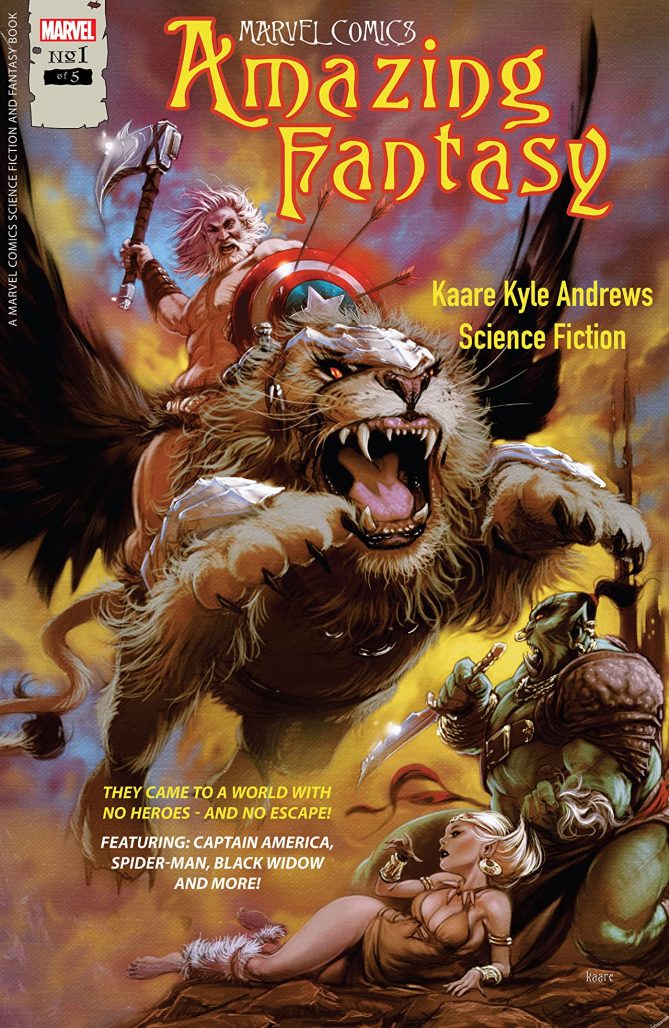
Amazing Fantasy #1
Writer/Artist: Kaare Andrews
Letterer: VC’s Joe Sabino
Cover Artist: Kaare Andrews
Reviewed by Zoe Tunnell
On paper, Amazing Fantasy #1 sounds like a great time. A standalone miniseries paying homage to pulpy sci-fantasy adventure using Marvel heroes from across the timeline? Sign me up! In execution, however, the debut is all flash and no substance. Kaare Kyle Andrews, pulling double duty as both writer and artist, clearly wants this to be a love letter to the pre-superhero era of pulp narratives, but aside from some gorgeous art, there is little to lift Amazing Fantasy beyond other similar riffs we’ve seen for decades, as well as many of their significant problems.
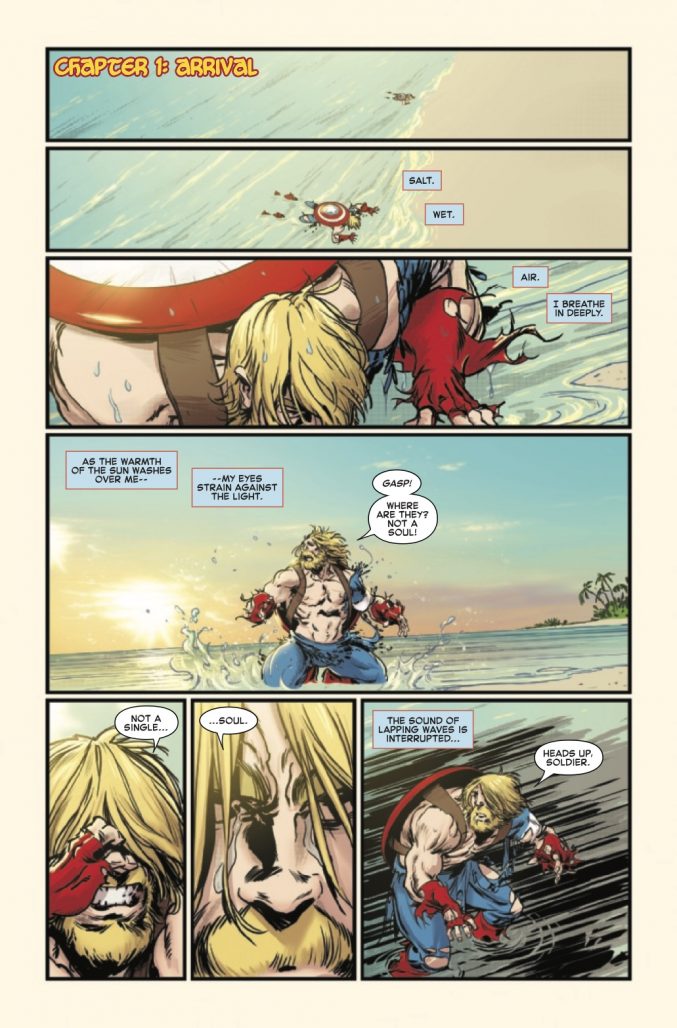
The three leads of the debut are Marvel mainstays, but not exactly how you may be expecting. Captain America arrives fresh from serving in the middle of World War 2, Spider-Man is plucked from his early days in the 1960s and a young Black Widow is taken from the 1980s Red Room training program as she attempted her escape. Of the three, the most interesting is teenage Natasha Romanov who is, tragically, the one with the smallest spotlight. Both Steve and Peter, in turn, are disappointingly one-note versions of the characters with stiff dialogue aping the tones of their respective eras. As their journey into mystery (wait, no, wrong title) continues, hopefully, Andrews can deliver more refreshing angles on these well-worn incarnations of equally well-worn characters.
The actual Fantasy part of Amazing Fantasy is, sadly, in a similar spot. Roaring manticores and dragons are fun, if familiar, but bumbling tribal beastmen veer too close to painful “savage” stereotypes of indigenous peoples for comfort. The inspiration seems intentional, even, as a scene where Spider-Man is nearly boiled alive in a cauldron by lizard-men is directly compared to similar scenes in old cartoons, which infamously featured harmful racist caricatures of indigenous people in many examples. Beyond that, Steve Rogers finds himself defending a blonde-haired, pale-skinned cat-woman and her son from a group of hulking dark-skinned orcs who speak in broken English and cringe-worthy “ooga booga” speak.
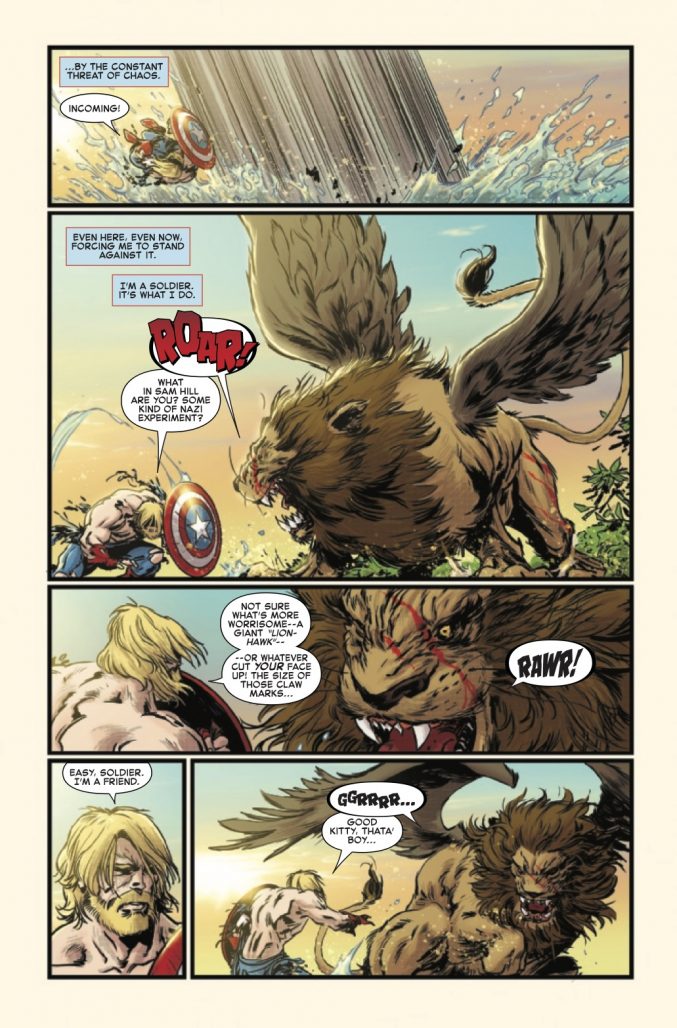
The undeniable best part of the issue is Andrews’ skill as a cartoonist. His compositions are energetic and full of emotion and weight, never seeming to sit still for more than a panel or two at most. The three introductions for our leads even make stylistic leaps, with Cap featuring Ben-Day dots amongst its muddied palette and Spider-Man’s swinging 60s adventure boasting almost blindingly bright colors and simple backgrounds. If not for the depiction of the beast-tribes and Andrews eye-rolling reliance on buxom bombshell builds for his women (a problem with his work in both Astonishing X-Men and Iron Fist: The Living Weapon) I would happily say this is one of the more visually appealing books Marvel has to offer right now, but that baggage isn’t, and shouldn’t be, easily overlooked.
I can see what the idea behind Amazing Fantasy is, what Andrews intended it to be. A fun, adventurous romp that pulls from the long history of pulp fantasy adventures from comics and beyond in a bombastic fashion. On a surface level, it certainly seems to succeed, but if you scratch at that surface there’s a sea of problems. It is impossible to pull from those eras of storytelling without awareness of the problems within and the long shadow they cast. Thus far, Amazing Fantasy has not only failed to do anything other than perpetuate the problematic legacy of pulp fiction, but also doesn’t manage to execute an entertaining enough tale to justify its own existence as a standalone tale. Sure is pretty to look at, though.
Final Verdict: Skip.
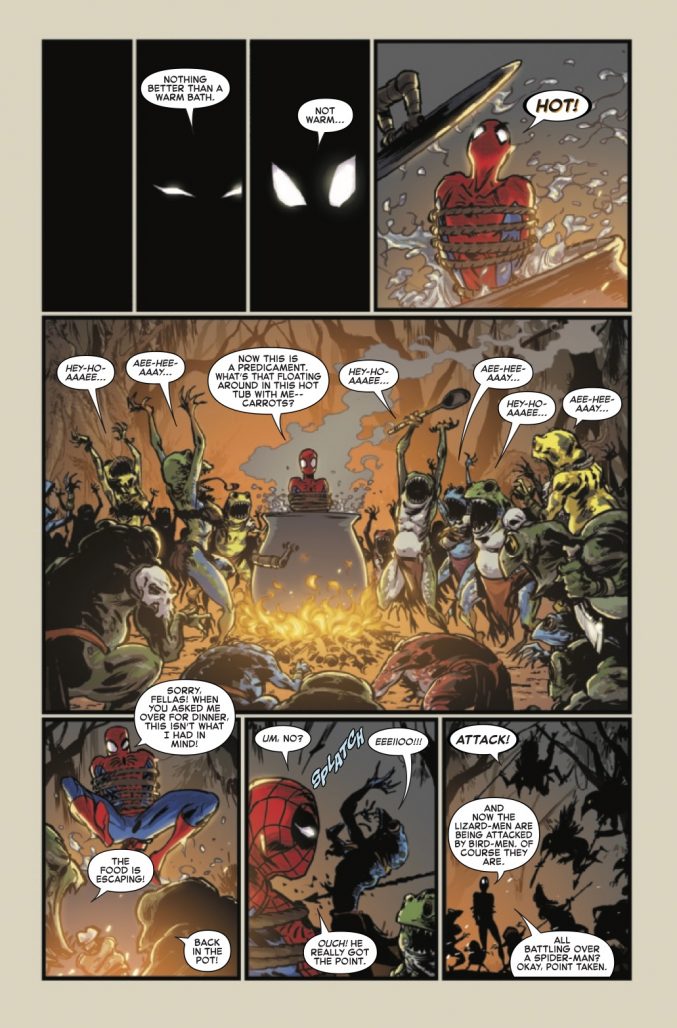
Rapid Rundown!
- Beta Ray Bill #5
- Daniel Warren Johnson’s miniseries about everyone’s favorite cybernetically enhanced horse-faced warrior, Beta Ray Bill, comes to its conclusion with issue five, and he delivers. For the last four issues, he’s has wrapped our emotions up in Bill’s quest for redemption/salvation and doesn’t pull any punches as Bill journeys to discover his place in the universe, a story that is always relatable to readers. In his typical fashion, Johnson’s artwork is a hyper-kinetic tornado of gritty action as Bill goes head to head with Surtur. This last issue is a no-holds-barred, knocked-down, drag-out fight with some very cool action bits and touching humor. I only hope that Marvel can find a way to get Johnson back for another go with Bill. —GC3
- Cable #12
- I didn’t think I’d ever say this, but I’m going to miss this Cable series. Since the Krakoan Age began, Kid Cable has shifted from a contrived concept to a character who I honestly loved seeing whenever he appeared, injecting some emotional weight to the new status quo for the Summers family given their tumultuous history. Despite all that, I liked how these past couple of issues have really tapped into the messiness of the character, giving this final story a cool, time-jumpy feel to it that felt in line with the general direction of Cable. Phil Noto’s work on this series has been consistent and stellar, looking grounded and gorgeous but also playful and personal. I won’t give anything away, but I’m very curious to see how things will play out in the future of the X-line following this issue’s ending. —HW
- Shang-Chi #3
- In the third chapter of this latest Shang-Chi series by Gene Luen Yang, the re-introduction of the eponymous superhero (and his family) continues, revealing the monumental new House of the Deadly Hand, located in Chinatown in New York City. This entry also builds on the previous issue’s conflict with Takeshi in interesting ways. Dike Ruan and Tríona Farrell deliver with some outstanding settings in the globetrotting issue, which also includes a dragon, a witch… and Wolverine? Well, the mutant’s appearance is worth it just for the hilariously accurate descriptor he applies to the absent Beast. Plus, it’s cool to see members of the mutant community going out of their way to look out for other mutants! —AJK
Next week, “Infinite Destinies” continues in the Guardians of the Galaxy annual!


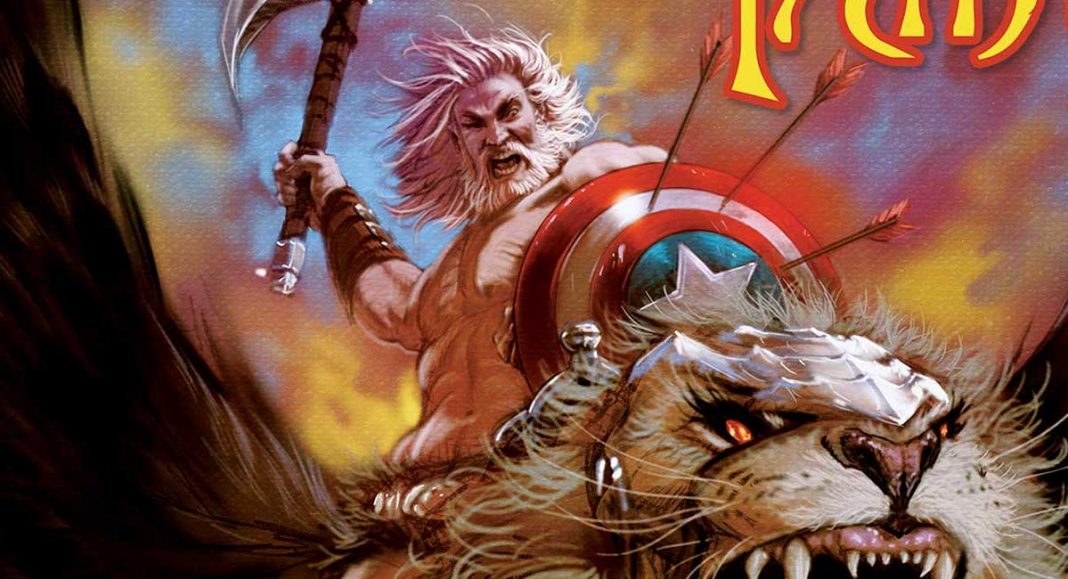
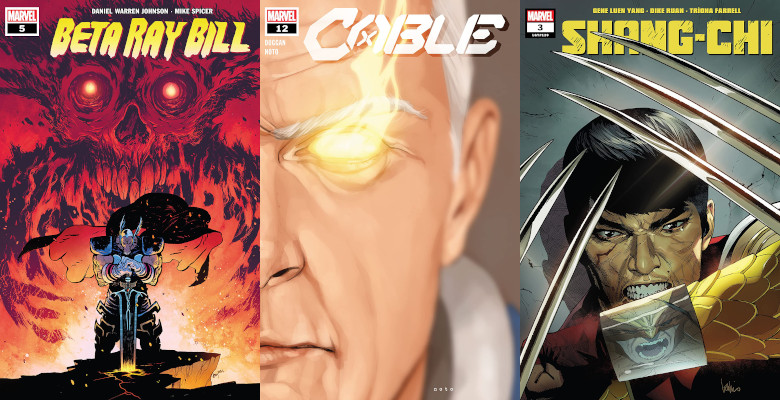


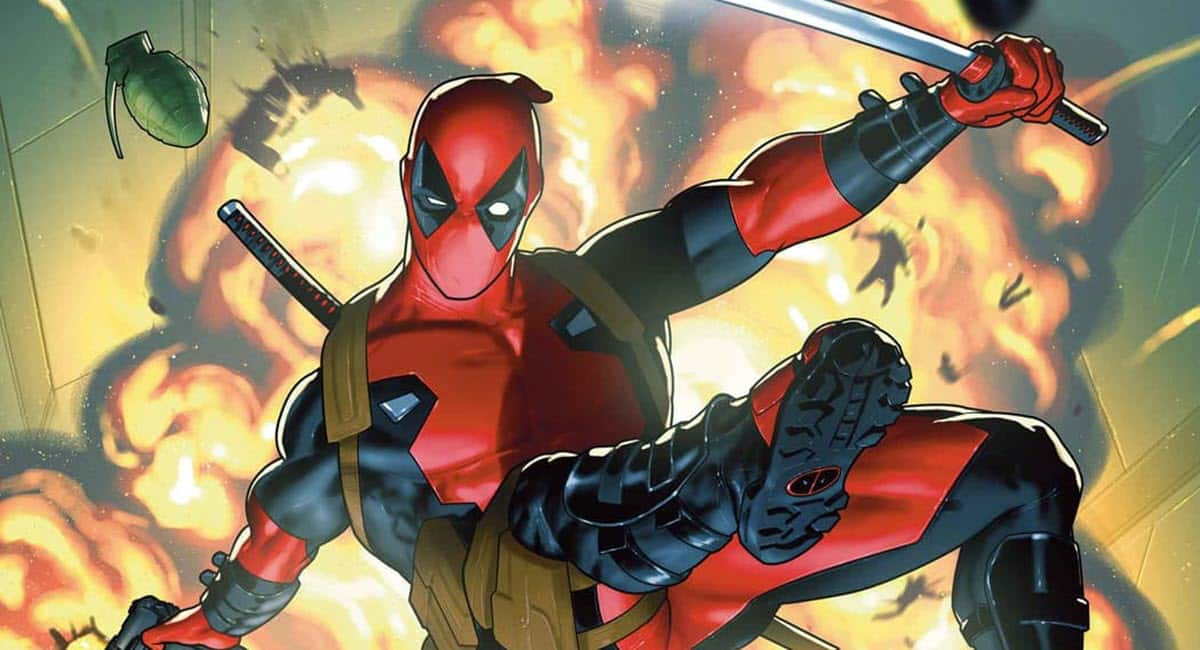



I have given up. Apparently now we live in a world where pulp and grindhouse are as bad as the devil’s taint, and to that I say the world can eat the largest of all ****s. Seriously. If you don’t like the genre you shouldn’t review it. Your bias makes for a ****** review.
It’s nonsense of course to say that being critical of a genre is to not like the genre. It’s perfectly possible to do pulp without engaging in racist stereotypes, and it’s perfectly reasonable to call these out. You know what’s NOT edgy? Doing pulp and Grindhouse so you can do your racism and sexism, and say “oh, but it’s just for sh** and giggles!” It’s 2021; we can be better than that.
Comments are closed.